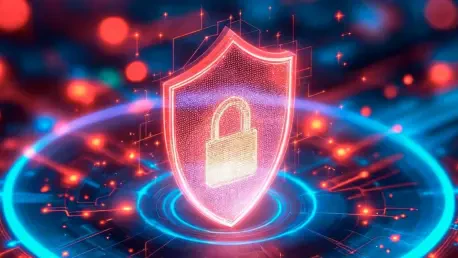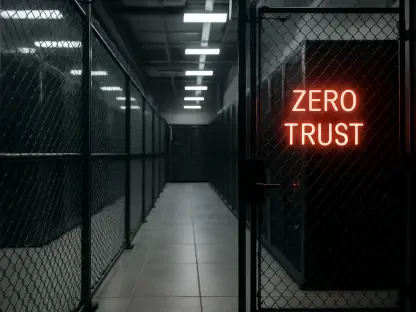As we navigate deeper into this year, Zero Trust has evolved from an emerging security concept to the fundamental architecture underpinning enterprise security. The paradigm shift reshapes how businesses approach security, as traditional perimeter-based defenses have proven inadequate against sophisticated modern threats. Organizations implementing Zero Trust practices experience significantly lower breach costs compared to those without such measures. Security leaders must now understand and prepare for the next wave of Zero Trust developments to stay ahead of evolving threats. Zero Trust follows the maxim “never trust, always verify,” requiring continuous validation of every digital transaction regardless of where it originates. This approach alters how security is conceptualized and deployed, turning networks into series of secure checkpoints rather than relying on rigid perimeter protection.
1. Zero Trust as the Default Security Model
Zero Trust has become the default security model for enterprises. Many new remote access deployments are utilizing Zero Trust Network Access (ZTNA) solutions as organizations pivot away from traditional VPNs. This shift is propelled by the challenges of hybrid work, cloud adoption, and increasingly sophisticated insider threats. Forward-thinking organizations are embedding Zero Trust principles into broader business strategies rather than treating them as isolated security initiatives. The regulatory landscape is accelerating Zero Trust adoption, with government agencies and industry bodies now regularly recommending or mandating Zero Trust principles. Enterprises are embracing Zero Trust as a starting point for security. However, maturity remains an issue, with only a small percentage of large enterprises currently having a mature and measurable Zero Trust program in place.
2. Bridging the Gap Between Adoption and Maturity
The gap between adoption and maturity presents both a challenge and an opportunity for security leaders. Organizations are shifting toward viewing Zero Trust not merely as a security framework but as a fundamental component of business strategy. The technical foundation rests on three core principles: terminating every connection to enable real-time inspection and prevent lateral movement by attackers; implementing granular, contextually aware access policies that ensure users and devices only access what they need; and reducing attack surfaces by eliminating network-based access entirely, focusing instead on application-level controls. Security leaders must champion this integrated approach to achieve meaningful security improvements.
3. Zero Trust 2025 Security Checklist
Developing a Zero Trust roadmap aligned with NIST 800-207 principles is imperative. Implement identity-driven security with MFA, SSO, and least privilege access. Strengthen vendor risk management with secure access portals and compliance checks. Deploy microsegmentation to limit lateral movement in networks. Use AI-driven tools for real-time threat detection and automated response. Assume breach readiness with disaster recovery and containment strategies. Address the cybersecurity talent gap with training and mentorship programs. Continuously monitor endpoints and network activity for anomalies. Foster cross-functional collaboration to embed Zero Trust into organizational culture. Integrate SASE architectures for unified security management and ZTNA adoption. Each of these tasks contributes to a robust Zero Trust framework, ensuring comprehensive protection against evolving threats.
4. Technological Advancements Reshaping Zero Trust
Artificial intelligence (AI) has become central to Zero Trust architectures. AI and machine learning automate threat detection, access control, and anomaly detection, enhancing security postures in real-time. As AI becomes more sophisticated, nuanced risk assessments and dynamic policy enforcement adapt to changing contexts without manual intervention. Continuous authentication is replacing static methods, shifting toward behavior-based models where users are continuously verified based on usage patterns. This approach integrates with identity-centric security controls that verify not just the user but also the device, location, and context of each access attempt. Facial recognition, fingerprint scanning, and behavioral biometrics are emerging mainstream technologies for identity verification, providing both enhanced security and improved user experiences.
5. SASE Integration and Unified Security Management
Secure Access Service Edge (SASE) growth accelerates as more businesses integrate Zero Trust with SASE to provide secure, seamless access for remote users while protecting cloud applications. This convergence offers a unified security approach, spanning networks, clouds, and endpoints, thereby enabling consistent policy enforcement regardless of where users or resources are located. SASE frameworks include threat prevention, access control, data protection, and analytics features, which collectively improve visibility and control over security operations. Integrating Zero Trust and SASE strategies minimizes risks associated with distributed work environments and entrenches security as a fundamental aspect of business processes.
6. Leadership Transformation for Zero Trust Success
Leadership frameworks integrating CIO and CISO roles yield significant improvements in security incident reduction, faster project delivery, higher stakeholder satisfaction, and enhanced risk management outcomes. Security leaders must develop new competencies to effectively implement Zero Trust strategies. Successful leadership demands a blend of strategic, technical, and leadership capabilities. Strategically, leaders must integrate security initiatives with broader business objectives and foster a risk-aware decision-making culture. Technically, a deep knowledge of modern security architectures, identity and access management, cloud security, and AI applications in security is needed. Sophisticated leadership skills are necessary for managing cross-functional teams and guiding organizations through complex technological transitions. Effective communication with diverse stakeholders, from boards to technical teams, is crucial to facilitating Zero Trust transformations.
Achieving Success with Strategic Integration
The gap between adoption and maturity in Zero Trust presents both challenges and opportunities for security leaders. Organizations are now shifting to view Zero Trust not just as a security framework but as an essential part of their business strategy. The technical foundation is built on three core principles: first, terminating every connection allows for real-time inspection and prevents attackers from moving laterally within networks. Second, granular, context-aware access policies ensure that users and devices only access what they need, enhancing security. Third, the strategy involves reducing attack surfaces by eliminating network-based access, instead focusing on application-level controls. Security leaders must advocate for this integrated approach to achieve significant improvements in security, aligning it closely with overall business objectives. This comprehensive strategy not only heightens security posture but also supports the broader organizational goal of robust, resilient operations.









